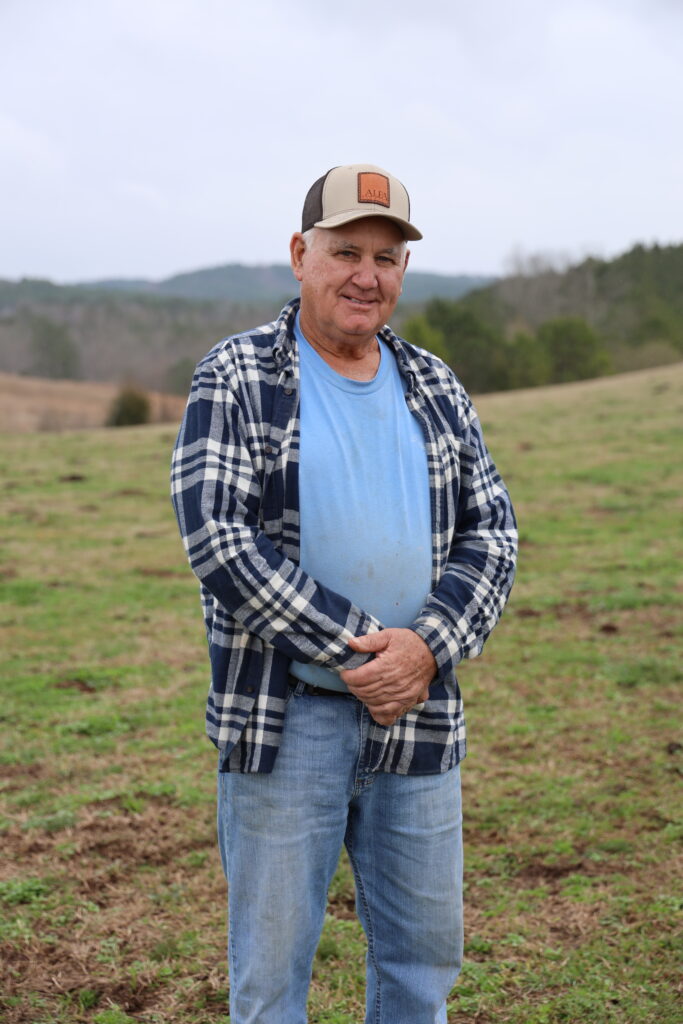Cattle Farmers Hopeful Despite Decreased Inventory

By Maggie Edwards
Alabama farmers like Clay County’s Chris Upchurch remain hopeful for the cattle industry despite a recent national inventory report.
“The number of cattle we have is at a 50-year low, but the flip side to that is we are producing more beef at a higher quality than we ever have,” said Upchurch, an Alabama Farmers Federation State Beef Committee member. “Producers are more efficient because of the decades of research we have put in.”
Inventory of U.S. cattle and calves measured 87.2 million head as of Jan. 1. That national count is down 2% from last year, while Alabama has 6% fewer head, according to the U.S. Department of Agriculture (USDA). The report showed the Top 10 cattle-producing states are down 716,000 head from 2023.
The decline is due to the difficult farm economy, said Federation State Beef Committee member Whitney Blackmon.
“It’s hard to be profitable in the beginning,” said Blackmon, who manages the Auburn University Beef Unit and runs a commercial cow-calf operation in Tallapoosa County. “There are so many inputs for cattle producers that most people don’t think of — fencing, feedstuffs, cattle and land to name a few. The prices just keep rising.”
Natural disasters can be a factor, too. Wildfires, like recent devastation in Texas, can cause loss in the thousands. Last year’s Southern drought took a toll, too, as farmers faced limited grazing for cattle and had less hay on hand.


Thanks to hard-working farmers like Upchurch, Blackmon and Tuscaloosa County’s Mark Landers, production of beef continues to rise. Since the ‘70s, there’s been a 25% increase in pounds produced, said Federation Beef and Hay & Forage Divisions Director Chris Prevatt.
“Good genetics make a difference,” Prevatt said. “We have more knowledge and use of feedstuffs, which allows us to put more gain on our cattle.”
In the 1970s, the U.S. had around 2 million cattle producers. The nation nears just half a million today. That’s a 75% decrease.
Despite seemingly bleak numbers, Blackmon isn’t discouraged.
“It looks scary,” she said, “but we have to look at the pounds of production. We are producing more pounds per animal now.”

Farmers keep moving forward regardless of challenges, Landers said.
“Our industry has shifted,” said Landers, a Federation State Hay & Forage Committee member. “Now more than ever we’re tasked with a tough job — feeding the growing population.”
Cattle farmers face the facts: Farming has tough years and slow seasons, though the good outweighs the bad, Prevatt said.
“Beef is in so many people’s diets,” Prevatt added. “There will always be a need for those who produce U.S. cattle.”
It’s important to focus on herd health and quality instead of quantity, Upchurch said. The Clay County Farmers Federation president concentrates on the family aspect of farming, too.
He, wife Jordyn and son Charlie own Rockin’ U Farm in Lineville, where they have a cow-calf operation and sell freezer beef. Charlie, 5, makes the pasture his playground and loves riding in the side-by-side to help with farm chores.
That matters, Upchurch said.
“I stay in the industry because it’s a great way to raise my family,” he said. “If we don’t do it, who will?”
